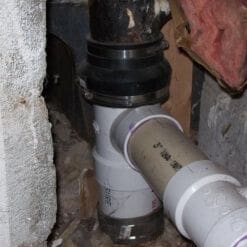 Knowing where and how to shut off the water supply to your entire house, or parts of it, is critical in an emergency. Everyone in your house should know where the valves are located and the direction they need to be turned to stop the flow.
Knowing where and how to shut off the water supply to your entire house, or parts of it, is critical in an emergency. Everyone in your house should know where the valves are located and the direction they need to be turned to stop the flow.
A good first step is to have your plumber show you where every valve is located. You can then attach tags to each one that identify its function and what fixtures it controls. When we are in your home, we’ll tag your valve for you and show you the pipes you need to know. Once we have tagged all your valves, take your family on a grand tour of your plumbing shut off sites. Have them turn the water off and back on so they are familiar with the process.
In emergencies, the most important valve is the main shut-off. It is usually found near the side of your house where the water meter is attached. It’s called a gate valve and most types look like a wheel. If it hasn’t been used in years, you may have to use a wrench to close it the first time. It’s a good idea to put a few drops of household oil on the handle threads once a year to keep it from corroding and to assure it will turn in case of an emergency.
If your shut-off valves do not look like wheels, they may have a ground-key types. Examine your pipes for what looks like a nut in the side of your pipe. Ground-key valves are also used for draining pipes, so keep in mind your plumbing may have both wheel and ground-key valves. If your house is on ground-key valves, we recommend you have gate valve (please see top photo) installed. They are easier to find and faster to use and require no tools. All are important features in an emergency. Occasionally, we run into a house that has no way to shut off the water. It’s rare, but we do see it. This is a disaster waiting to happen. Give us a call and we will install a main shut-valve for you.
Well-plumbing houses have individual shut off valves on the water lines leading to fixtures such as water, heaters, dishwashers, sinks, and toilets. If a problem occurs, you can turn the water supply off to the culprit (while you call us) and still have water to the rest of your house.
When an emergency plumbing issue arises, the first rule is to stop the flow before it can do serious damage to your home and belongings. Once it’s stopped give us a call.